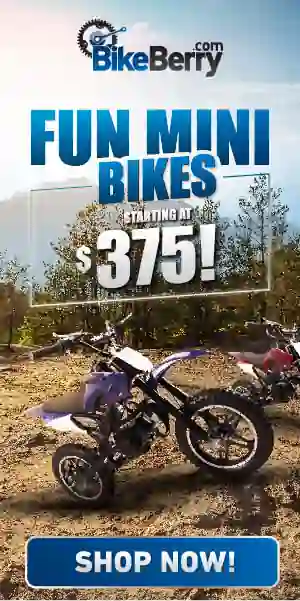RockShox ZEB – The Enduro Race Blitzkrieg
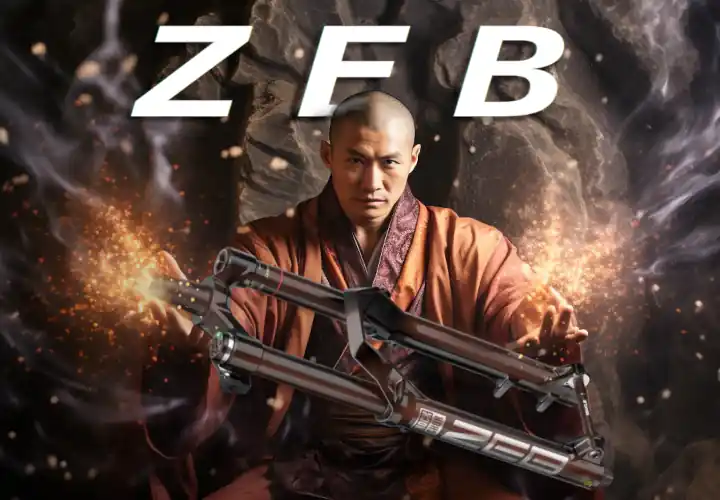
RockShox ZEB Forks. The popular newcomer to Enduro racing
Deep in the heart of America, under the eyes of the gods, a new force is merging. The RockShox ZEB is imposing a new order on the world.
ZEB forks are the new star of the RockShox lineup. Designed as a response to the popular Fox 38, the ZEB sits between the RockShox Lyrik and Boxxer .
ZEB is an abbreviation of Zebulon, a Hebrew name meaning exalted, or honored. Living up to their name, these forks are made for EWS racers.
With 38 mm stanchions and up to 190 mm travel, there are several ZEB models. The core models stay true to the RockShox other model variants, the Ultimate, Select+, and the Select. There are two other options: an eMTB variant featuring a Dual Position Air spring with customizable travel, and “Domain” forks.
The Domain RC and Domain R were introduced in the 2022 model year. With 38 mm stanchion and up to 190 mm travel, Domain forks are positioned as entry level ZEBs.
Internally, the RockShox ZEB exploit the same technology as the Lyrik. They have a new DebonAir air spring with a larger negative chamber and redesigned piston head. Domain forks follows suit with the latest DebonAir air spring.
The difference in the models comes down to the damper fitted to the forks.
- The ZEB Ultimate takes the outstanding Charger 3 damper, which features adjustable low and high-speed compression and low-speed rebound.
- The Select+ is fitted with the Charger 2.1 (no low speed damping circuit). The ZEB Select+ is not available for sale directly and can only be purchased as part of a complete bike package.
- The Select has the Charger RC damper.
- Domain forks are fitted with the older Motion Control damper, which is limited to rebound adjustment.

ZEB Ultimate Flight Attendant
RockShox Flight Attendant is available for ZEB Ultimate forks.
Flight Attendant is the industry leading electronic suspension system. A predictive algorithm adjusts the suspension settings in microseconds to keep your suspension tuned for the track ahead.
Follow this link for more details on RockShocks Filght Attendant.
ZEB Configuration Statistics
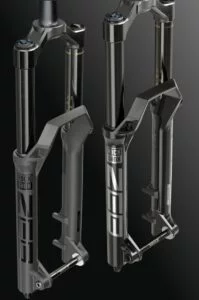
ZEB Ultimate Specifications
Stanchions 38 mm
Travel 150 – 190 mm
Weight 2265 grams
Damper Charger 3 with HSC & LSC
Price $1,535
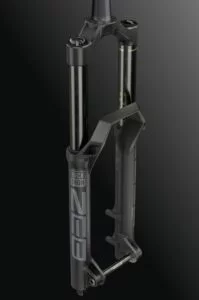
ZEB Select
Stanchions 38 mm
Travel 150 – 190 mm
Weight 2253 grams
Damper Charger RC
Price $1,228
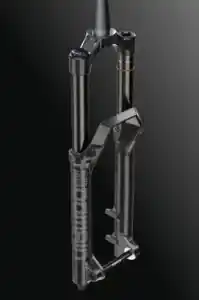
Domain RC Specifications
Stanchions 38 mm
Travel 150 – 180 mm
Weight 2606 grams
Damper Motion Control
Price $827
ZEB Ultimate Setup
The ZEB and Domain are simple to set up. Everything is designed to make the rider’s life easy. There are tortoise and hare graphics next to the rebound dial to illustrate fast and slow, and markings on the stanchions to help set sag and travel.

Airspring Setup
Using the fork setup Trailhead tool on the RockShox website, I set the pressure in the DebonAir spring to 72 psi for my 95 Kg frame. The tool adjusts recommendations for pressure and rebound, taking account of rider weight, fork model, air spring type, fork travel, and even the type of bike (e-bike or analog MTB).
Locating the dimple at the beginning of travel on the new DebonAir, eliminates the requirement to push down on the forks. The need to equalize the positive and negative pressure chambers after every pressure change is no longer required with the latest air spring design.
The new DebonAir spring resulted in only 2 or 3 mm of sag where last years air spring had lost around 20 mm of travel before the bike had moved off the spot.
The 38 mm stanchions on the ZEB require lower pressures than smaller diameter stanchions. Small pressure variations have a greater effect on the spring rebound rate than with Lyrik, Pike or SID forks.
Adding bottomless tokens is a straightforward process, and the effect on spring progression is pronounced with each addition. Adding tokens allowed me to reduce pressure in the air spring to soften the initial bump compliance while still preventing bottom outs on thumping drops.
I found that there was a mass of support with plenty of progression before inserting tokens. I even reduced pressure below recommendation to fully utilize the 190 mm travel on the ZEB Ultimate that I was riding.
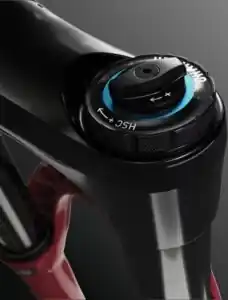
Rebound Damping
The trailhead tool also recommended -7 clicks of rebound, but I prefer a more open setting (faster, anti-clockwise) high-speed compression.
The slow speed rebound adjustment on ZEB Ultimate’s is used to resist fork dive under braking, and power sapping bounce when pedaling. There are 5 clicks of low speed, which stiffens as you twist the nob clockwise.
Adjusting the slow speed rebound also affects the behavior of high speed settings. As I increased low speed damping, I needed to open the high speed further. High speed and low speed rebound offers a trade off. It took several short runs to find a balance that delighted me. I eventually settled on -8 with the low speed rebound in the middle position.
Very light riders may struggle to find a responsive configuration, but as a 95 Kg pilot with a mid weight eBike, I had no trouble tuning in the ZEB’s.

Riding the RockShox ZEB
The ZEB’s offer similar damping and rebound feel to Lyrik forks, although they offer greater travel and stiffness to inspire greater confidence on rough terrain. The stiffer ZEB is more stable and capable than Lyrik forks when you hit heavily rocky tracks.
Pushing the ZEB’s to the limit reveals impressive mid-stroke support that conveys confidence.
Landing on roots and rocks was not something to avoid. RockShox ZEB forks took care of business, instilling the confidence to go harder. When grabbing a handful of brakes on rooted trails, or hammering callously threw flying turns, ZEB’s keep their line.
The greater confidence the forks inspire comes at a price. There is less give on from ZEB forks than the thinner Lyrik forks. ZEB forks need more strength to keep them on line. You feel the full force of the impact when you take a big hit where Lyrik forks would flex a little more.
Adjusting the low-speed compression has a significant impact on the behavior of the forks. I could instantly modify the fork’s character by twisting the low speed adjuster for more end stroke support.
The high speed damping adjustment tunes the ZEB for roots, rocks and sharp bumps.
Out of the box, with recommended settings from the RockShox Trailhead tool, the fork is smooth over modest bumps while remaining high in its travel. Recommended settings make light work of the small stuff, reducing hand and arm fatigue on chattery, heavily rooted tracks.
If you enjoy fast, high-speed trails, the stiffer ZEB lifts an undeniable fearlessness. There is, of course, a downside. The price to hold tighter lines and achieve more control over rough tracks requires more rider effort than with lighter forks.
The ZEB acts eagerly and directly, but requires strength to ride hard. If you are not an athlete, and occasionally want a smooth, relaxed ride, the lighter, more complaint Lyrik is worth considering. The ZEB is quickly outshining the Lyrik as the beefier 38 mm stanchions are becoming more popular.
The rising popularity of 38 mm stanchions has much to do with promotion in the elite race community, rather than the real world. Certainly, I prefer 38 mm stanchion forks on my e-bikes. With e-bikes, the engine power overcomes many of the downsides of heavier forks.
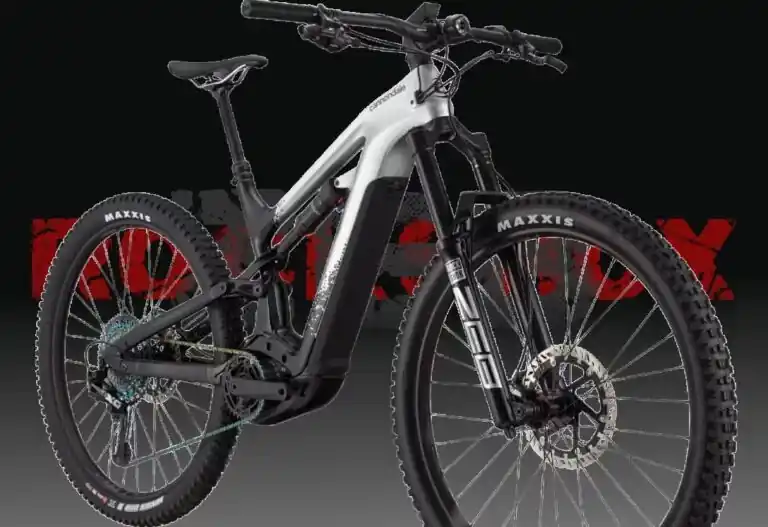
CONCLUSION
If a RockShox Lyrik isn’t burly enough for you, the RockShox ZEB lifts the game.
The ZEB is precise, simple to set up, and competitively priced (Undercutting its main rival, the Fox 38). This is a fork for energy brimming adrenaline junkies who like to push through corners and crash over drops.
ZEB forks need an aggressive rider to get the most from them. ZEB’s are designed for EWS racers who thrive on extremes or e-bikes that augment the casual riders ability.
